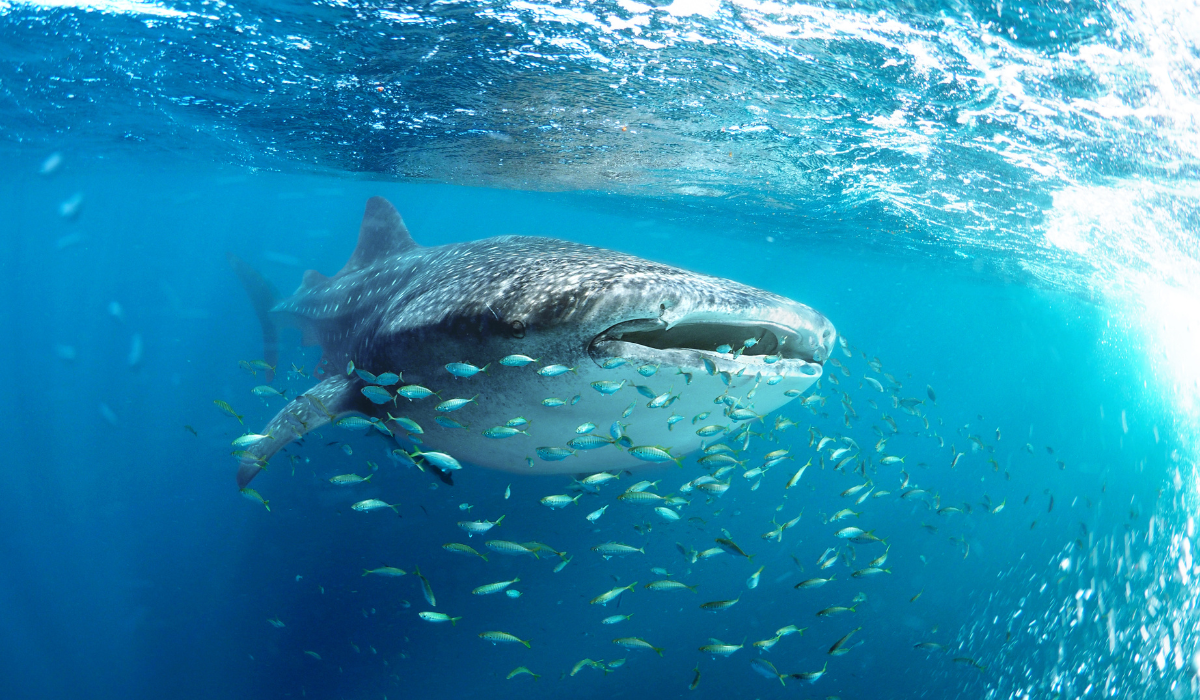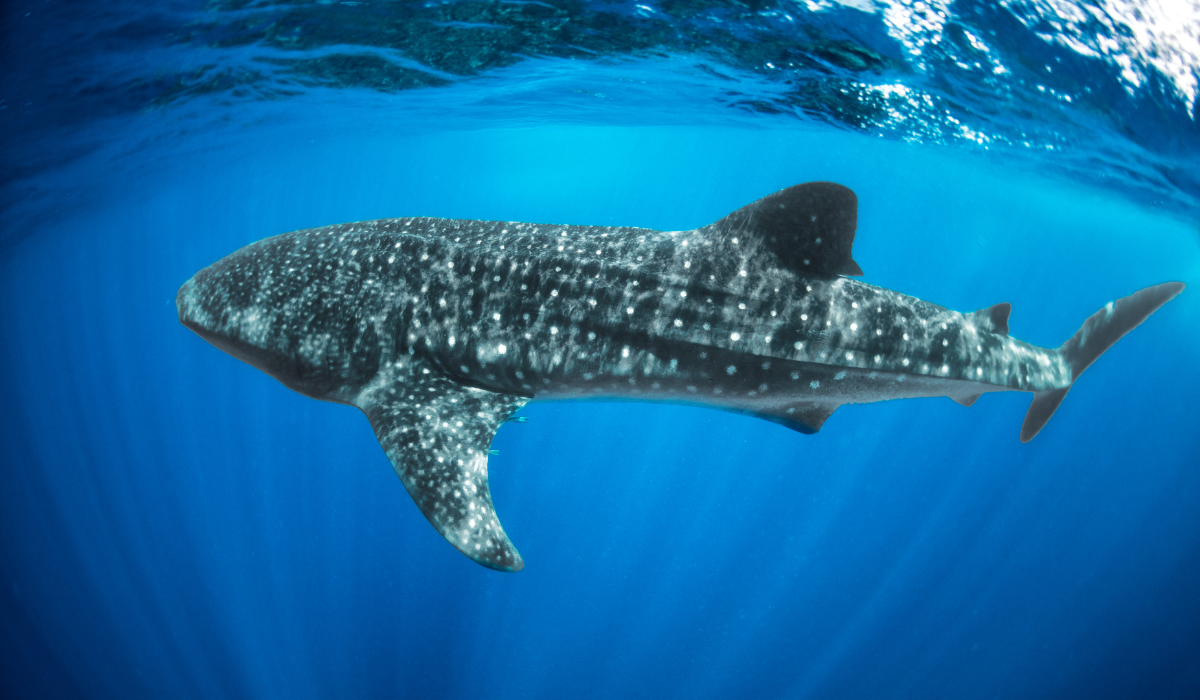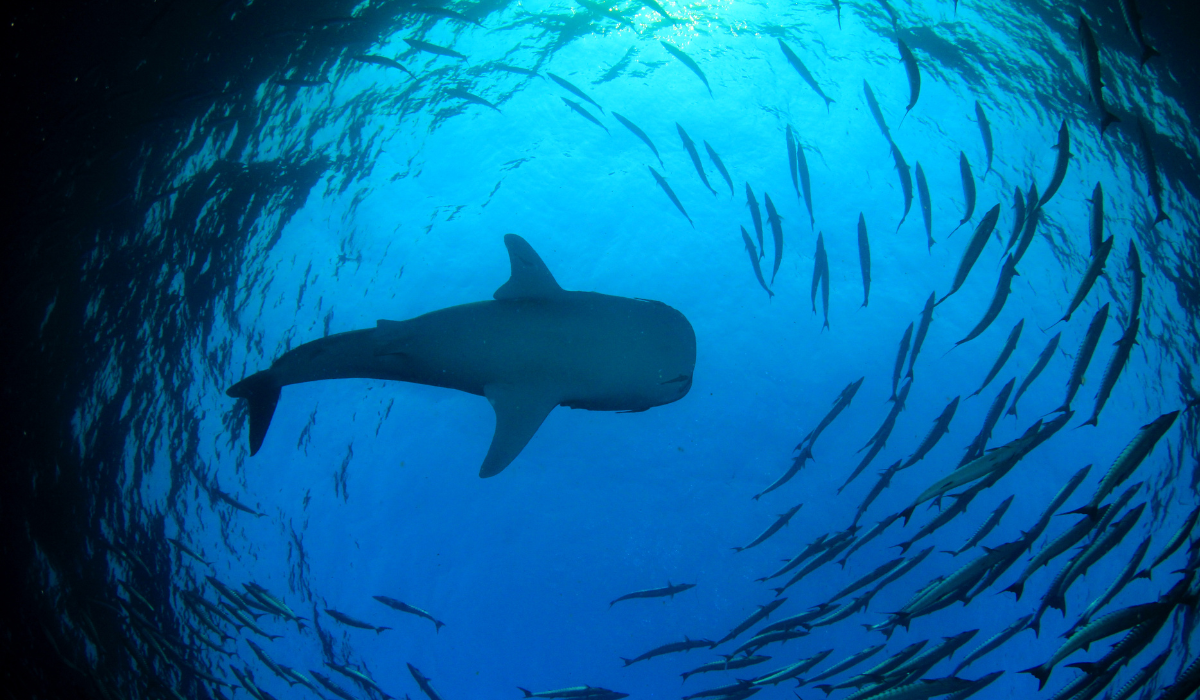
Despite their monumental size, a whale shark’s diet predominately consists of one of the smallest microscopic entities in the oceans – plankton. But their appetite for these minuscule creatures draws them in droves every year to a very special location in our corner of the Baa Atoll.
Recently, a team from The Nautilus, headed by marine biologist Emily Wilson, was honoured to visit the Maldives Whale Shark Research Programme (MWSRP) crew and learn more about this intriguing yet elusive gentle giant.
In this third part of our whale shark series, Emily, shares some fascinating details about the whale shark’s feeding habits.
”Whimsical Whale Sharks – the Gentle Giants of the Open Ocean” (Part 3 of 4)
Whale sharks are filter feeders; when plankton are copious in the water column, the shark will actively pump water into its widely gaping mouth and extract as many copepods, nematodes, krill and any other tasty particulate matter as possible.
Suction feeding – a kind of extension of filter feeding – is only observed in plankton-rich water due to its energy-exhaustive nature. In contrast, when only small portion sizes are up for the taking, whale sharks display a far more relaxed filter-feeding strategy: Like the ram-feeding behaviour of the basking shark (Cetorhinus maximus), the shark swims passively with its mouth open wide to funnel every last morsel of food in its trajectory.
Interestingly, in recent years, the whale shark has been observed bottom feeding – the feeding strategy of most stingrays and sea cucumbers – where it suctions bottom-dwelling organisms in the sand. As whale sharks are deep-diving and highly mobile animals, it is difficult to know if they have always exhibited this feeding behaviour or if this new strategy is opportunistic to cope with changes in resource availability.

Teeth not made for chewing
Interestingly, whale sharks have 300 rows of tiny teeth inside their cavernous mouths, each 2 mm long. While it is known that they do not use these for chewing food, scientists predict they could play a role in courtship and mating behaviours. However, whale shark mating activities remain elusive, and there are no known aggregation sites for breeding.
Teeth are also observed on the outside of the shark’s body; the entirety of its skin is blanketed with teeth-like scales, known as dermal denticles. This tough skin barrier is highly advantageous in the marine environment as it is highly resistant to parasitic growth and is extraordinarily hydrodynamic. As you can imagine, any reduction in drag benefits an ocean giant navigating through turbulent waters.
Recently, researchers in Japan discovered the whale shark also has an armoured eyeball, covered with nearly 3,000 tiny teeth – or dermal denticles. Many other shark species have adapted extra eye protection, a third eyelid coated in the same teeth-like structures, known as a nictitating membrane. As the whale shark’s eyes lie exposed, situated at the outmost edges of its head, it has adapted the ability to retract the eye into the socket’s orbit by up to 1 inch when an object approaches, exposing connective tissue in its place.
How to find a beastly feast
How whale sharks exactly locate concentrations of prey is still a mystery. We currently have two theories.
The species’ highly developed olfactory lobes are believed to detect a type of chemical or pheromone dissolved in the water. And when zooplankton feed on phytoplankton – the photosynthesising foundation of the food chain – a strong-smelling compound called dimethyl sulphide is released, which indicates a plankton feast’s presence.

Another possible explanation is that the sharks might home in on noise emitted by hungry fish feeding on plankton. The whale shark holds the record for the biggest eardrum of any fish, which could be used to detect this feasting event and their prey. In addition, their astute hearing capabilities factor into avoidance behaviour when approached by loud vessels and during noisy encounters.
If you missed the last part of this story, you can read it here – and do keep a lookout over the next few weeks for the final part.
The Nautilus is just a 15-minute luxury yacht ride from Hanifaru Bay in Baa Atoll, a UNESCO Biosphere Reserve, one of the very few places in the world where whale sharks congregate to mate.
Witness these majestic creatures for yourself. Get in touch at [email protected] or talk to us at +960 730 98 18 to begin crafting your Nautilus journey.
